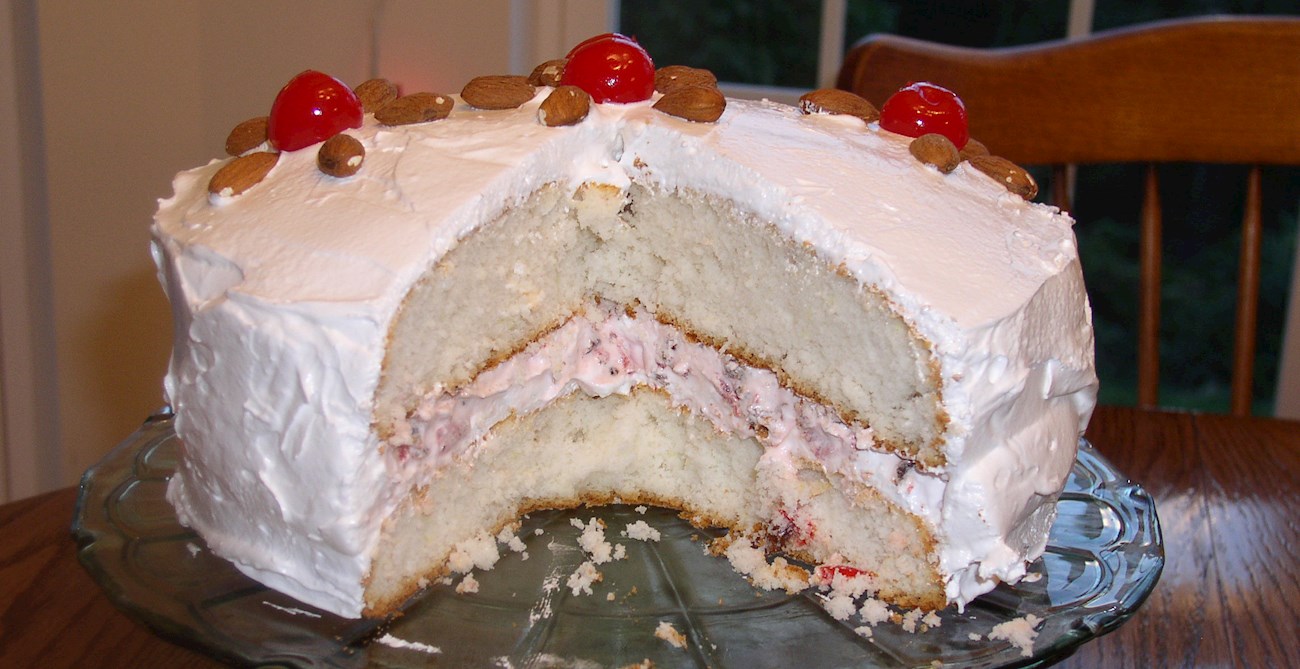Benne wafers are traditional American cookies originating from Charleston, South Carolina. They are made with a combination of butter, sugar, flour, eggs, baking powder, and benne – the Bantu word for sesame seeds. In the past, they were a good-luck parting gift for guests at plantation parties.
The cookies are crispy and light, with a nice nutty flavor. Nowadays in Charleston, benne wafers are traditionally sold as souvenirs for visitors and locals alike.
This American classic is said to have been created toward the end of the 19th century by Florence and Nina Ottelengui who ran Charleston’s Lady Baltimore Tea Room. In 1906, when Owen Wister wrote a romance novel by the same name in which he poetically described this luscious dessert, the cake gained unmatched popularity and has been a Southern favorite ever since.
Lady Baltimore is made of several layers of white sponge cake and a rich, marshmallow-like divinity frosting mixed with chopped nuts and dried fruits like raisins, figs, and dates. Also, apart from the egg-whites-only Lady cake, there is a version called Lord Baltimore which is made with leftover yolks and filled with toasted almonds, crushed macaroons, and candied cherries.
A favorite of Charleston's tearooms, Huguenot torte is a baked apple and pecan or walnut pudding-cake with a crispy meringue-like top, typically served with a dollop of whipped cream. Contrary to the popular misconception, the cake doesn't have French origins nor was it named after the Huguenots - French Protestants who fled to South Carolina in the 17th century for religious freedom.
In fact, Huguenot torte is a fairly recent invention whose original recipe is merely a rendition of a Midwestern dessert called Ozark pudding. The recipe first showed up in print in a successful 1950 community cookbook Charleston Receipts, and was attributed to Evelyn Anderson Florance who stated that she named the Charleston classic after the Huguenot Tavern, a restaurant where she worked as a pastry chef.
TasteAtlas food rankings are based on the ratings of the TasteAtlas audience, with a series of mechanisms that recognize real users and that ignore bot, nationalist or local patriotic ratings, and give additional value to the ratings of users that the system recognizes as knowledgeable. TasteAtlas Rankings should not be seen as the final global conclusion about food. Their purpose is to promote excellent local foods, instill pride in traditional dishes, and arouse curiosity about dishes you haven’t tried.





